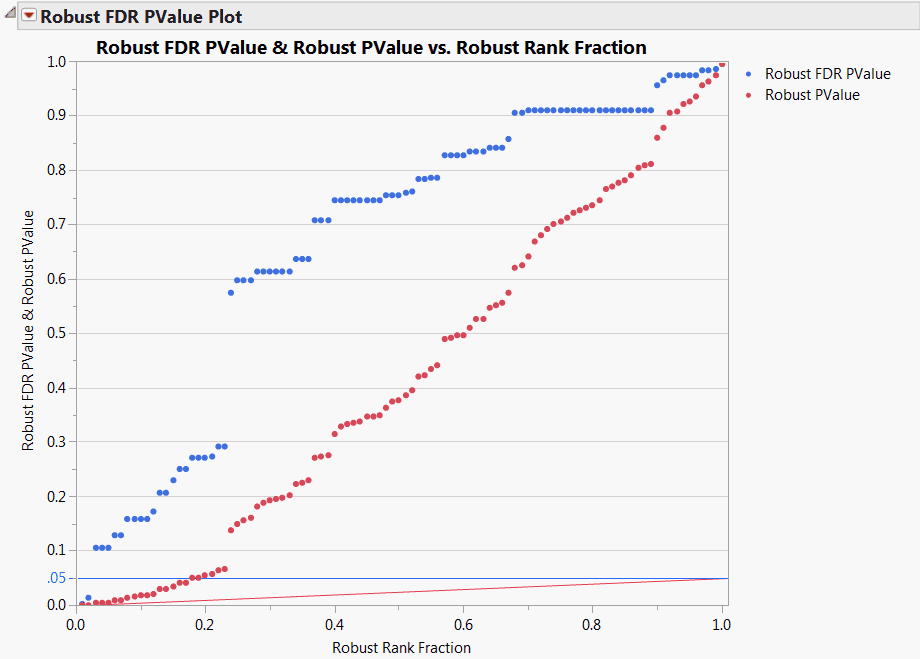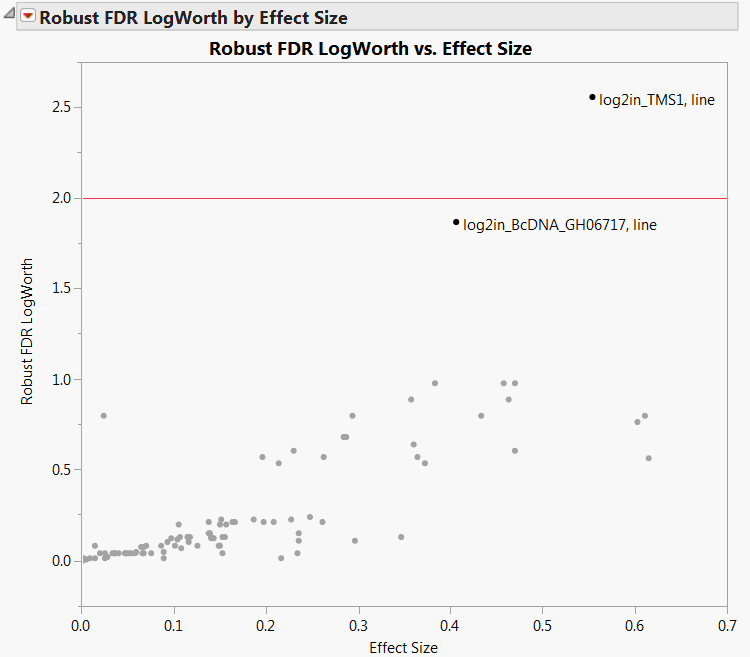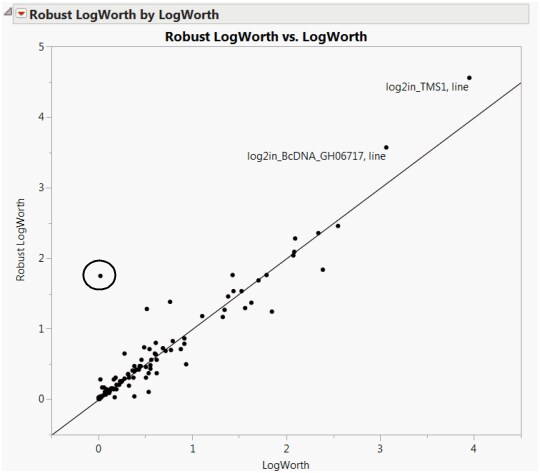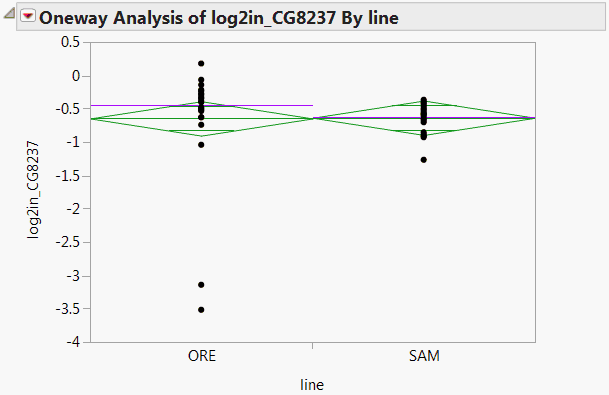|
1.
|
Open the Drosophila Aging.jmp table.
|
|
2.
|
Select Analyze > Screening > Response Screening.
|
|
3.
|
Select all of the continuous columns and click Y, Response.
|
|
4.
|
|
5.
|
Check Robust.
|
|
6.
|
Click OK.
|
The Robust FDR PValue Plot is shown in Figure 17.16. Note that a number of tests are significant using the unadjusted robust p-values, as indicated by the red points that are less than 0.05. However, only two tests are significant according to the robust FDR p-values.
Figure 17.16 Robust FDR PValue Plot for Drosophila Data
|
9.
|
In the PValues data table, select Rows > Label/Unlabel.
|
The plot shown in Figure 17.17 appears. Points above the red line at 2 have significance levels below 0.01. A horizontal line at about 1.3 corresponds to a 0.05 significance level.
Figure 17.17 Robust LogWorth by Effect Size for Drosophila Data
The plot shown in Figure 17.18. If the robust test for a response were identical to the usual test, its corresponding point would fall on the diagonal line in Figure 17.18. The circled point in the plot does not fall near the line, because it has a Robust LogWorth value that exceeds its LogWorth value.
Figure 17.18 Robust LogWorth by LogWorth for Drosophila Data
Note that the response, log2in_CG8237 has PValue 0.9568 and Robust PValue 0.0176.
|
13.
|
In the Response screening report, select Fit Selected Items from the red triangle menu.
|
A Fit Selected Items report is displayed containing a Oneway Analysis for the response log2in_CG8237. The plot shows two outliers for the ORE line (Figure 17.19). These outliers indicate why the robust test and the usual test give disparate results. The outliers inflate the error variance for the non-robust test, which makes it more difficult to see a significant effect. In contrast, the robust fit down-weights these outliers, thereby reducing their contribution to the error variance.
Figure 17.19 Oneway Analysis for log2in_CG8237



